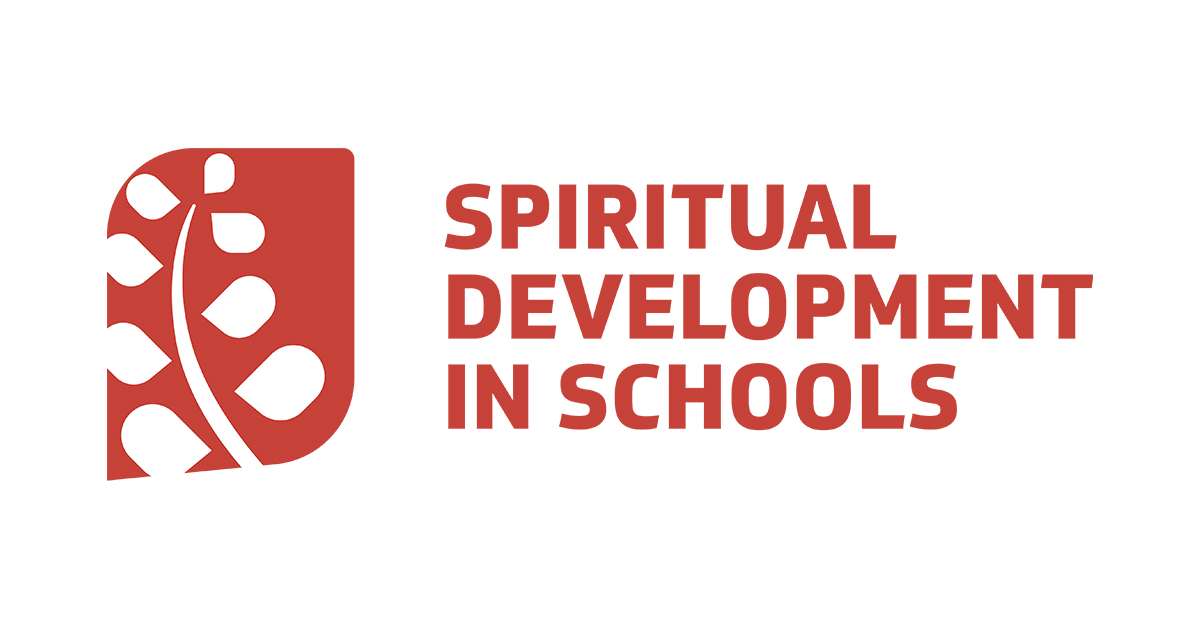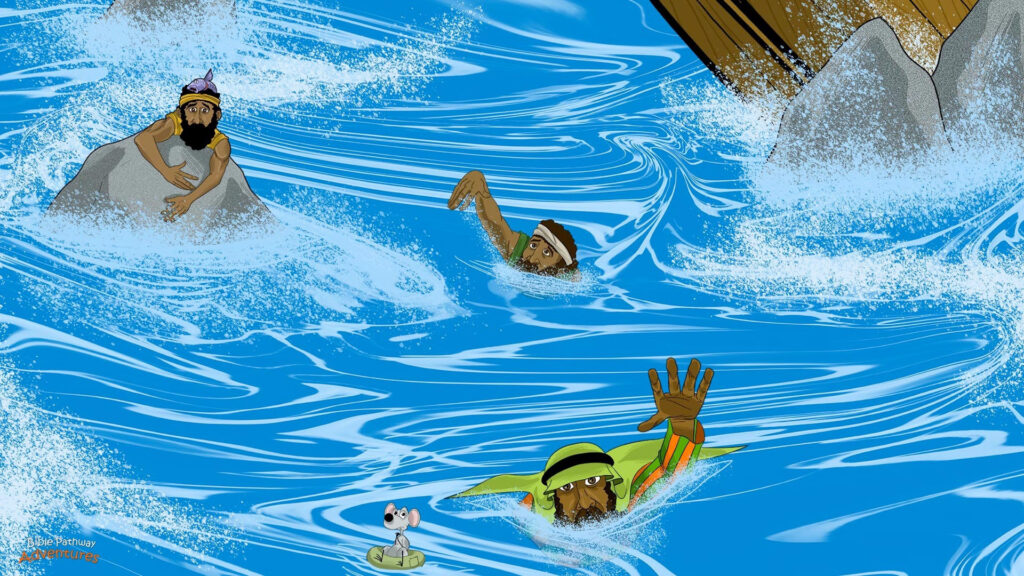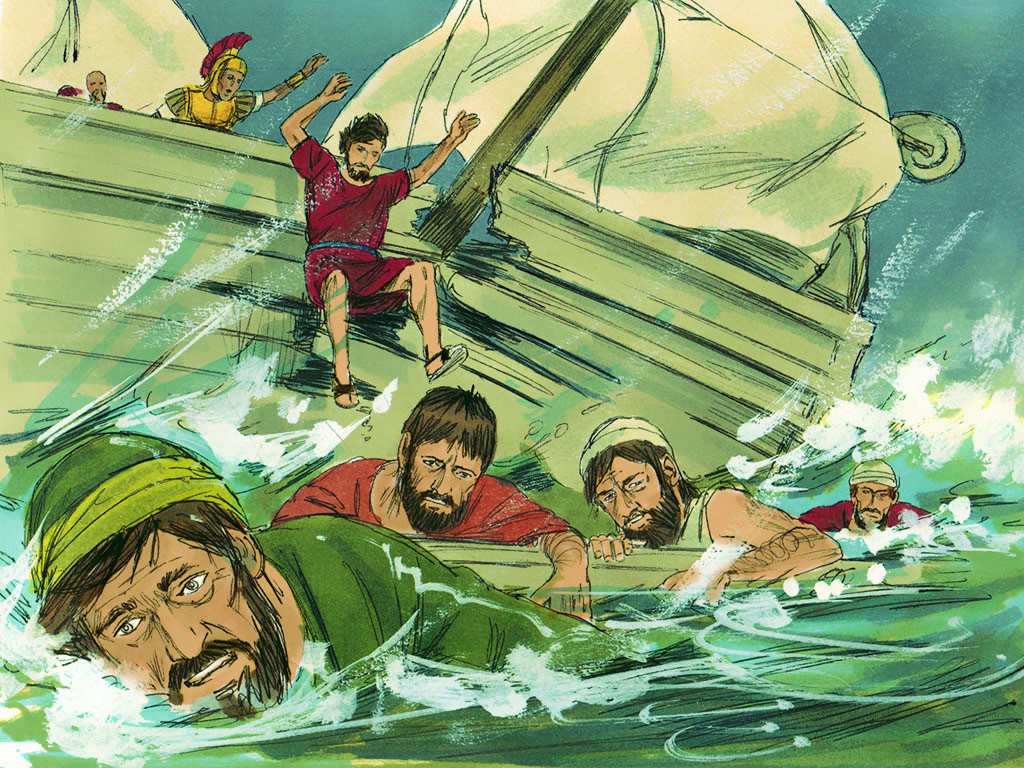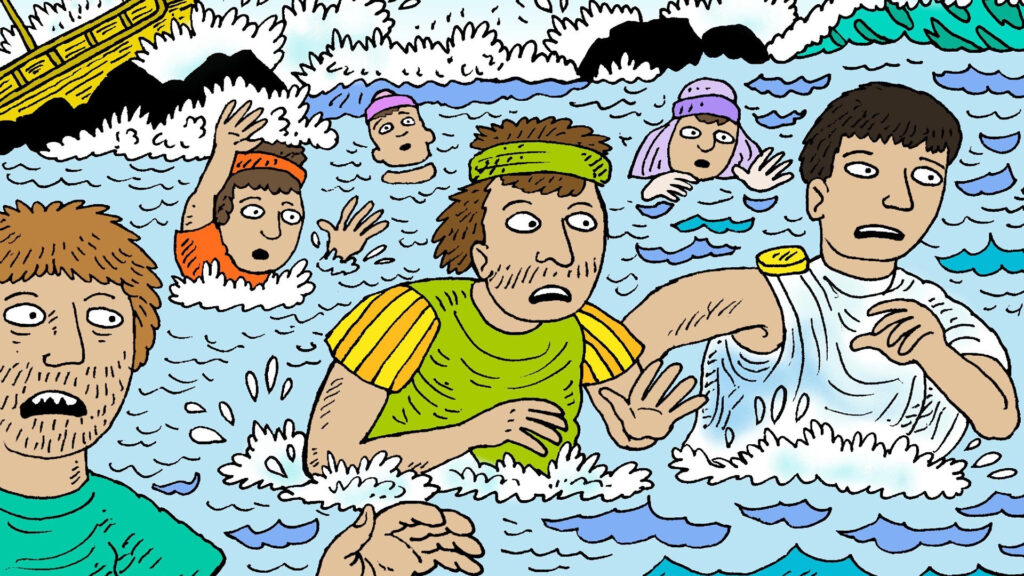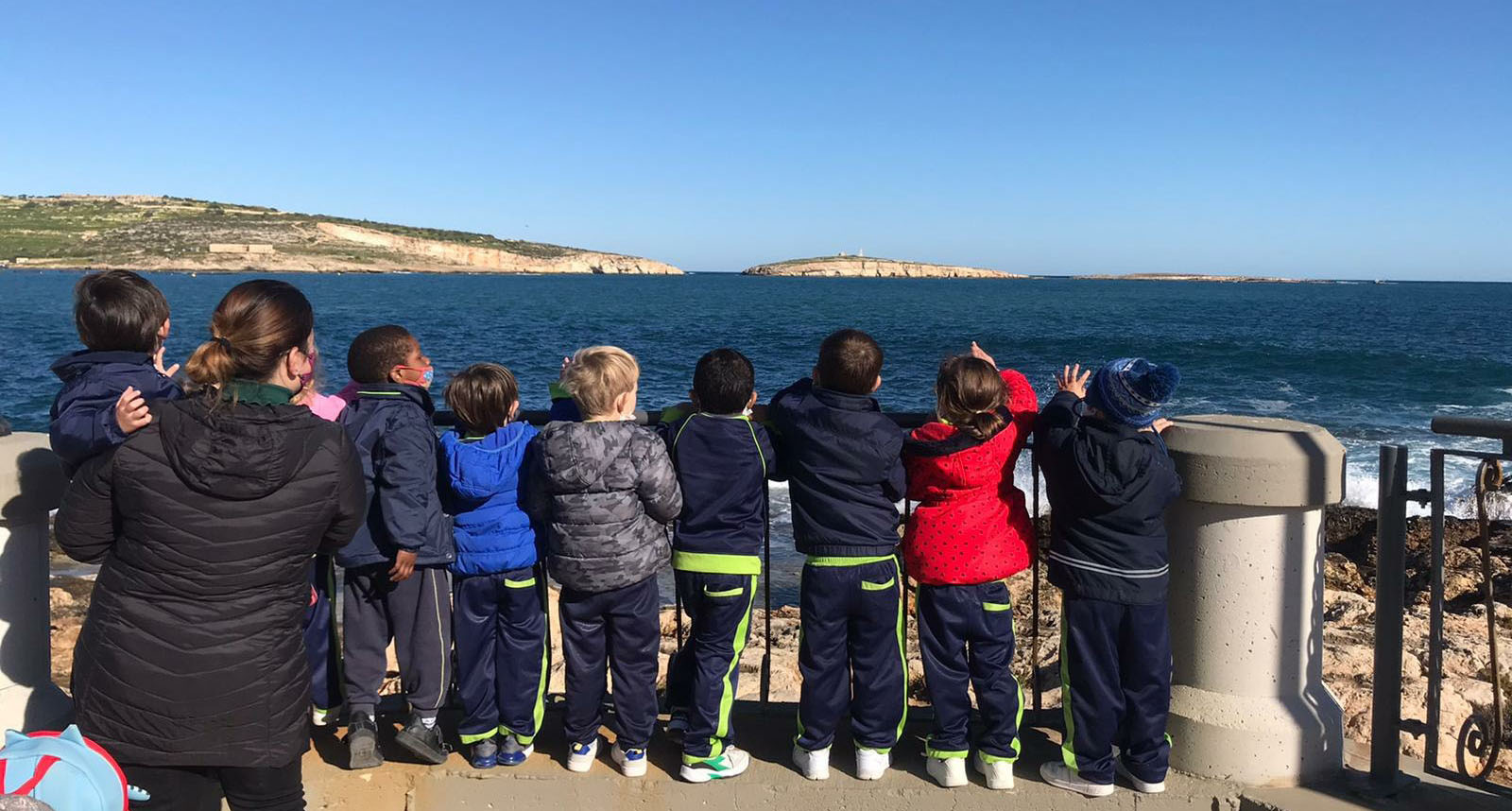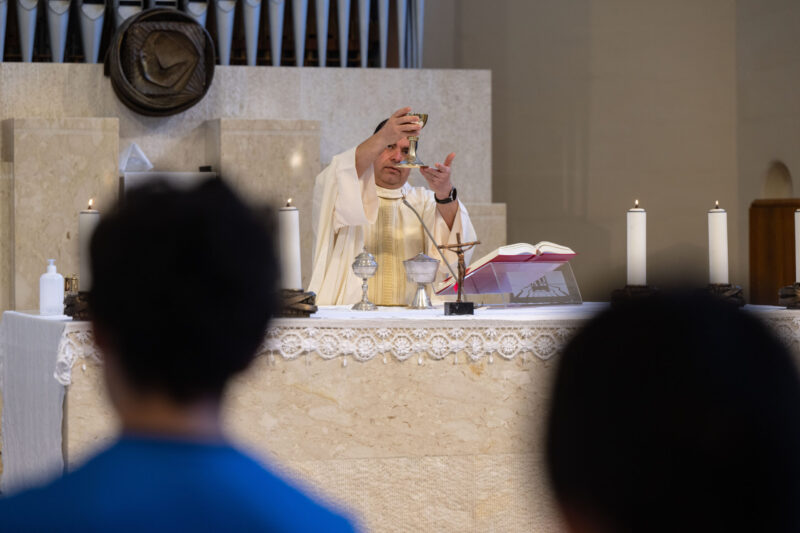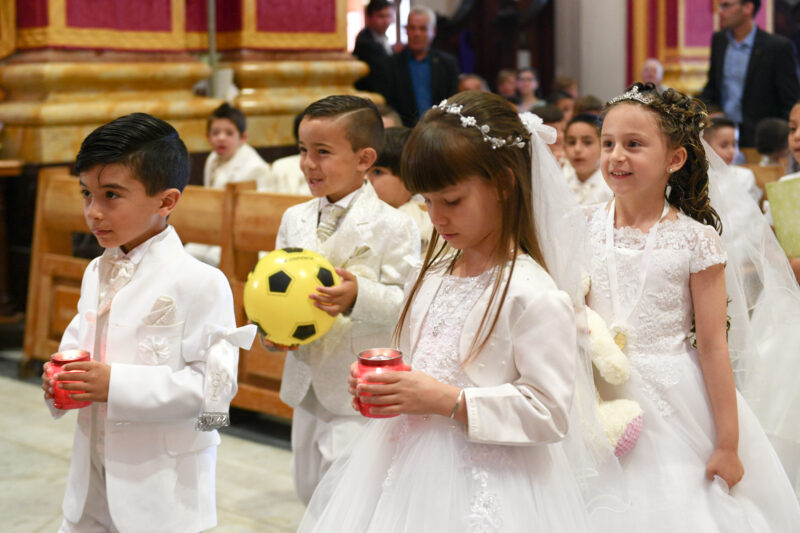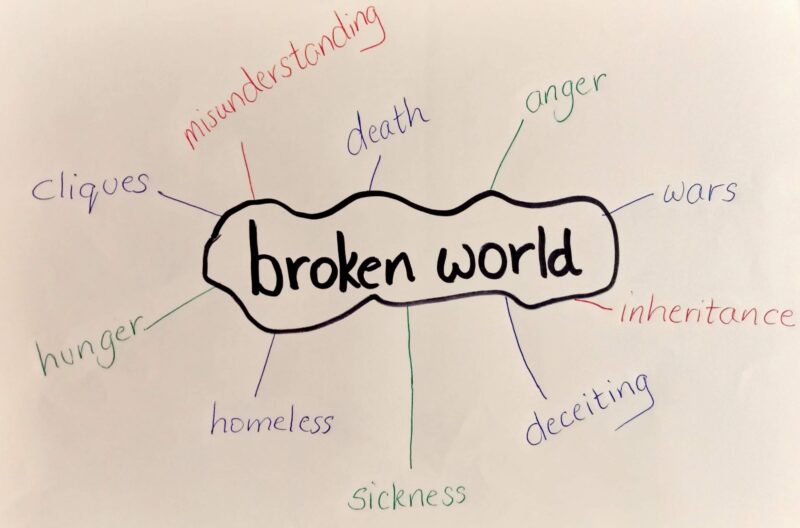On 10th February, the people of God in Malta celebrate the Shipwreck of St Paul. The Providence of God brought the apostle of the peoples to the island and there he shared the Good News and healed the people. This marks the beginning of the Christian faith in Malta. As we celebrate it, we grow stronger in our faith so that we live the Good news in today’s circumstances.
Ages
- Early Years
- Primary Years
- Middle Years
- Secondary Years
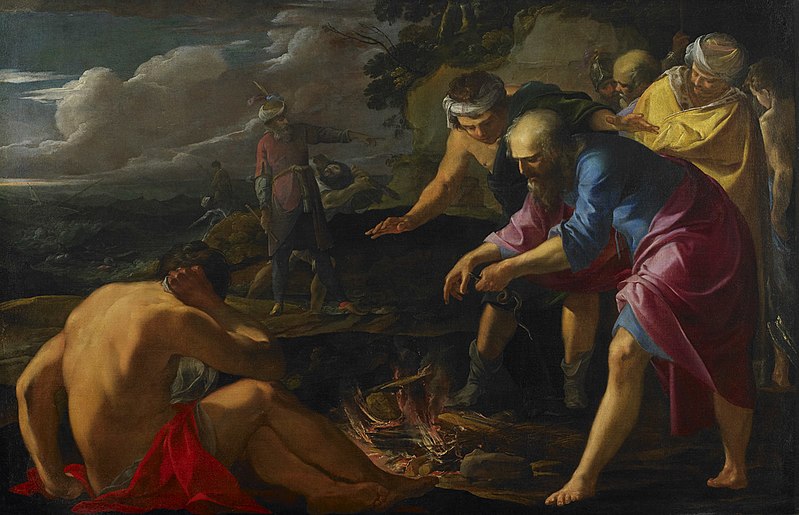
The following resources are related to the celebration of St Paul’s Shipwreck in Malta.
The Shipwreck
27 On the fourteenth night we were still being driven across the Adriatic[c] Sea, when about midnight the sailors sensed they were approaching land. 28 They took soundings and found that the water was a hundred and twenty feet[d] deep. A short time later they took soundings again and found it was ninety feet[e] deep. 29 Fearing that we would be dashed against the rocks, they dropped four anchors from the stern and prayed for daylight. 30 In an attempt to escape from the ship, the sailors let the lifeboat down into the sea, pretending they were going to lower some anchors from the bow. 31 Then Paul said to the centurion and the soldiers, “Unless these men stay with the ship, you cannot be saved.” 32 So the soldiers cut the ropes that held the lifeboat and let it drift away.
33 Just before dawn Paul urged them all to eat. “For the last fourteen days,” he said, “you have been in constant suspense and have gone without food—you haven’t eaten anything. 34 Now I urge you to take some food. You need it to survive. Not one of you will lose a single hair from his head.” 35 After he said this, he took some bread and gave thanks to God in front of them all. Then he broke it and began to eat. 36 They were all encouraged and ate some food themselves. 37 Altogether there were 276 of us on board. 38 When they had eaten as much as they wanted, they lightened the ship by throwing the grain into the sea.
39 When daylight came, they did not recognize the land, but they saw a bay with a sandy beach, where they decided to run the ship aground if they could. 40 Cutting loose the anchors, they left them in the sea and at the same time untied the ropes that held the rudders. Then they hoisted the foresail to the wind and made for the beach. 41 But the ship struck a sandbar and ran aground. The bow stuck fast and would not move, and the stern was broken to pieces by the pounding of the surf.
42 The soldiers planned to kill the prisoners to prevent any of them from swimming away and escaping. 43 But the centurion wanted to spare Paul’s life and kept them from carrying out their plan. He ordered those who could swim to jump overboard first and get to land. 44 The rest were to get there on planks or on other pieces of the ship. In this way everyone reached land safely.
Paul Ashore on Malta
28 Once safely on shore, we found out that the island was called Malta. 2 The islanders showed us unusual kindness. They built a fire and welcomed us all because it was raining and cold. 3 Paul gathered a pile of brushwood and, as he put it on the fire, a viper, driven out by the heat, fastened itself on his hand. 4 When the islanders saw the snake hanging from his hand, they said to each other, “This man must be a murderer; for though he escaped from the sea, the goddess Justice has not allowed him to live.” 5 But Paul shook the snake off into the fire and suffered no ill effects. 6 The people expected him to swell up or suddenly fall dead; but after waiting a long time and seeing nothing unusual happen to him, they changed their minds and said he was a god.
7 There was an estate nearby that belonged to Publius, the chief official of the island. He welcomed us to his home and showed us generous hospitality for three days. 8 His father was sick in bed, suffering from fever and dysentery. Paul went in to see him and, after prayer, placed his hands on him and healed him. 9 When this had happened, the rest of the sick on the island came and were cured. 10 They honored us in many ways; and when we were ready to sail, they furnished us with the supplies we needed.
27Meta wasal l-erbatax-il lejl, konna ninsabu mitfugħin ’l hawn u ’l hemm fil-baħar ta’ Adrija. Għall-ħabta ta’ nofs il-lejl il-baħrin ħassew li konna resqin qrib xi art. 28Skandaljaw il-fond tal-baħar, u sabu għoxrin qama; imxejna ftit ieħor ’il quddiem, reġgħu skandaljaw, u sabu ħmistax. 29Huma beżgħu li xi mkien konna se naħbtu ma’ xi skoll, u għalhekk niżżlu erba’ ankri mill-poppa. Ix-xewqa tagħhom kienet li ma jdumx ma jisbaħ. 30Il-baħrin bdew ifittxu li jaħarbu mill-ġifen, u niżżlu dgħajsa l-baħar bħallikieku biex idendlu xi ankri mill-pruwa. 31Iżda Pawlu qal liċ-ċenturjun u lis-suldati: “Jekk dawn ma jibqgħux fuq il-ġifen, intom ma tistgħux issalvaw.” 32Imbagħad is-suldati qaċċtu l-ħbula tad-dgħajsa u ħallewha tmur għal riħha.
33Meta sar il-ħin biex jisbaħ, Pawlu qabad jagħmel il-qalb lil kulħadd biex jitrejqu b’xi ħaġa, u qalilhom: “Issa ġa ilkom erbatax-il ġurnata tistennew sajmin u ma dduqu xejn. 34Għalhekk agħmlu l-qalb u trejqu b’xi ħaġa tal-ikel; dan jiswielkom għal saħħitkom, għax ħadd minnkom mhu se jitlef xagħra waħda minn rasu.” 35Kif qal dan, qabad il-ħobż, radd il-ħajr lil Alla quddiem kulħadd, qasam u beda jiekol. 36Imbagħad kulħadd għamel il-qalb, u ħadu xi ħaġa tal-ikel huma wkoll. 37Konna b’kollox mitejn u sitta u sebgħin ruħ fuq il-ġifen. 38Wara li xebgħu, bdew iħeffu l-ġifen u jwaddbu l-qamħ il-baħar.
In-nawfraġju ta’ Pawlu f’Malta
39Xħin imbagħad sebaħ, l-art ma għarfuhiex; lemħu biss bajja bi xtajta fiha, u qatgħuha li, jekk jistgħu, jitfgħu l-ġifen fuqha. 40Irħew l-ankri u telquhom il-baħar, u ħallew ukoll l-irbit tat-tmun. Imbagħad tellgħu l-qala’ ż-żgħir ta’ quddiem għar-riħ u rħewlha lejn ix-xtajta. 41Iżda ħbatna ma’ sikka bejn żewġ kurrenti, u l-baħrin waħħlu l-ġifen fuqha. Il-pruwa baqgħet imwaħħla sewwa fil-post u ma tħarrkitx iżjed, imma l-poppa bdiet titfarrak bil-qilla tal-mewġ. 42Is-suldati riedu kieku joqtlu l-priġunieri, li ma jmurx jaħrab xi ħadd minnhom bil-għawm; 43iżda ċ-ċenturjun, li ried isalva ’l Pawlu, ma ħalliex il-ħsieb tagħhom iseħħ. Lil dawk li kienu jafu jgħumu ordnalhom jintefgħu huma l-ewwel il-baħar u jmorru l-art; 44lill-oħrajn ordnalhom jilħqu x-xatt, min fuq twavel u min fuq bċejjeċ imkissra tal-ġifen. U hekk kulħadd qabad l-art qawwi u sħiħ.
Pawlu f’Malta
1Meta ħlisna mill-għarqa, sirna nafu li l-gżira kien jisimha Malta. 2In-nies tagħha ġiebu ruħhom magħna bi ħlewwa liema bħalha. Laqgħuna tajjeb lilna lkoll u qabbdulna ħuġġieġa, għax kienet bdiet nieżla x-xita u kien il-bard. 3Mela Pawlu qabad qabda zkuk niexfa u tefagħhom fin-nar. Fiz-zkuk kien hemm lifgħa li, malli ħasset is-sħana, ħarġet u qabdet ma’ id Pawlu. 4In-nies tal-gżira, kif raw il-lifgħa mdendla ma’ idu, bdew jgħidu wieħed lil ieħor: “Dan ir-raġel żgur xi qattiel, għax għad li ħelisha mill-baħar, il-Ġustizzja ma ħallitux jgħix!” 5Imma hu farfar il-lifgħa ġon-nar u ma ġralu xejn. 6Huma stennew li se jarawh jintefaħ jew jaqa’ u jmut f’daqqa. Wara li damu jistennew ħafna u raw li ma ġralu ebda deni, biddlu l-ħsieb u bdew jgħidu li kien xi alla.
7F’dawk l-inħawi kien hemm l-oqsma tal-prinċep tal-gżira, li kien jismu Publju. Dan laqagħna u bil-qalb kollha żammna għandu tlitt ijiem. 8Missier Publju inzerta mixħut, marid bid-deni u d-disenterija. Pawlu daħal ħdejh, għamel talba, qiegħed idejh fuqu u fejqu. 9Wara dan imbagħad bdew ukoll jersqu għandu l-morda l-oħra tal-gżira, u hu fejjaqhom. 10Urewna ġieħ kbir, u meta ġejna biex nitilqu, għabbew fuq il-ġifen kulma konna neħtieġu.
The following prayer spaces will help the participants to pray and reflect on one of the aspects related to the shipwreck of St Paul in Malta. The animator chooses the activity which best fits the aim of the reflection.
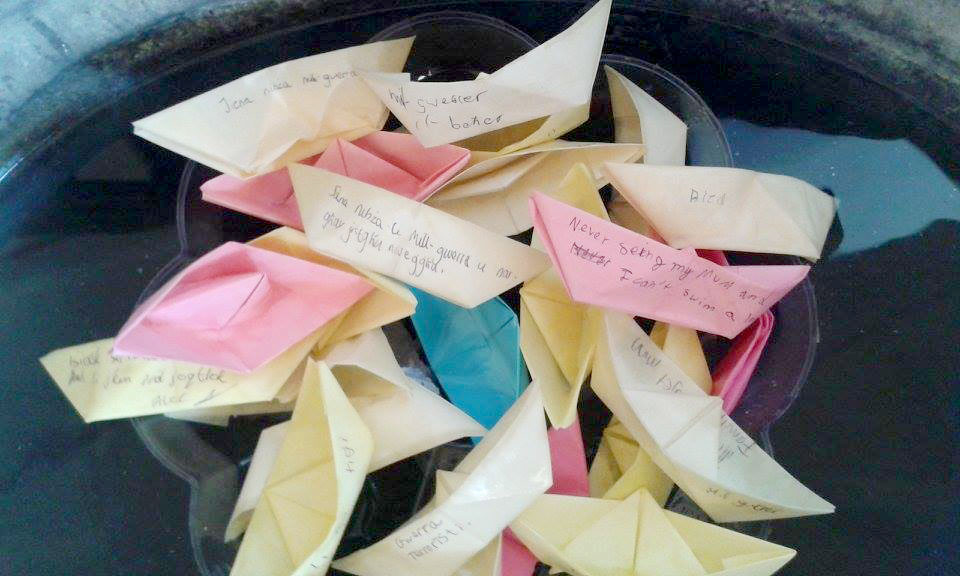 Worry BoatsThis prayer activity helps one to understand God’s love in our life turbulences. |
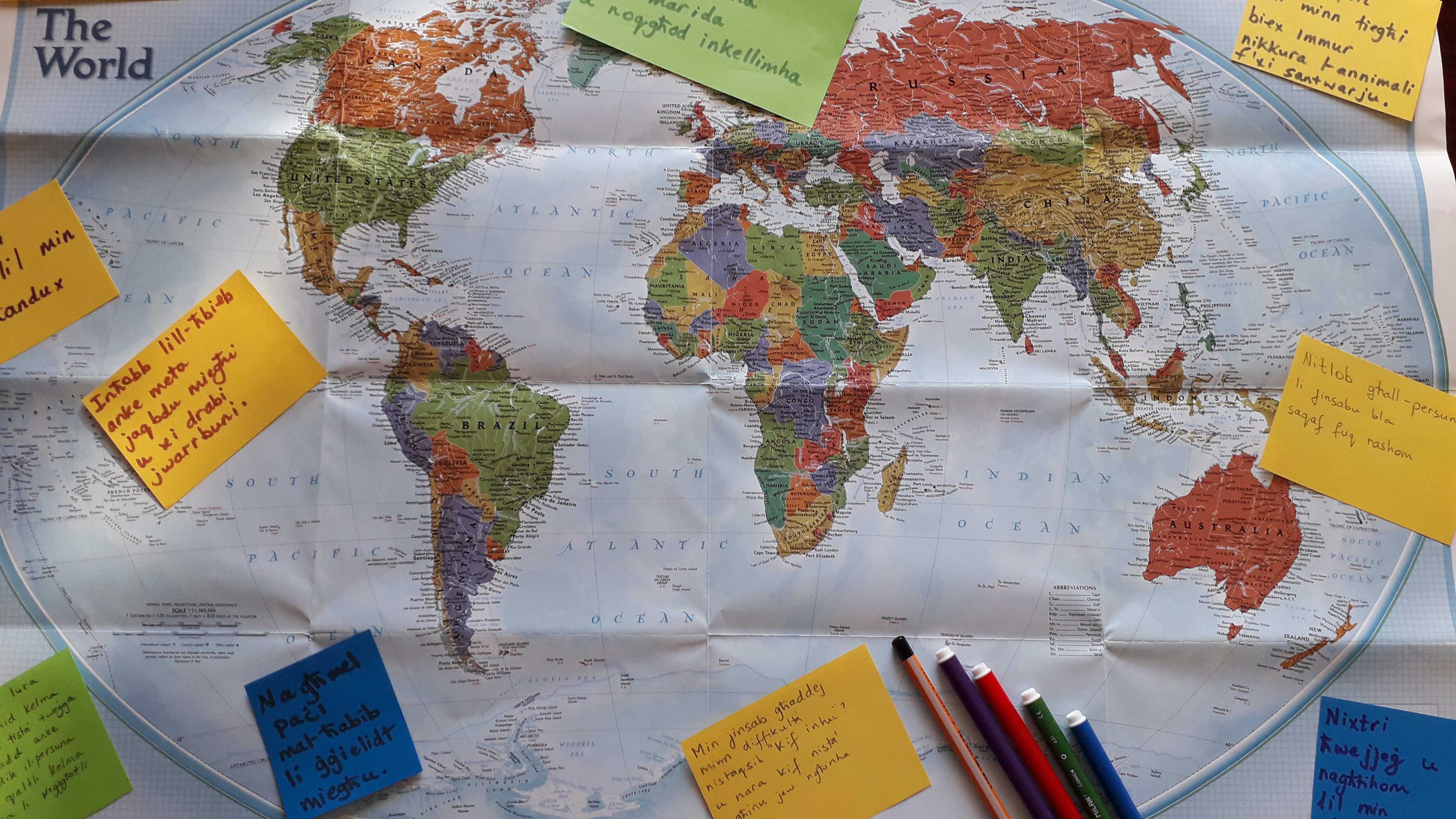 Easter: The Great CommissionDuring this prayer space one thinks about how with God’s help the world can become a better place. |
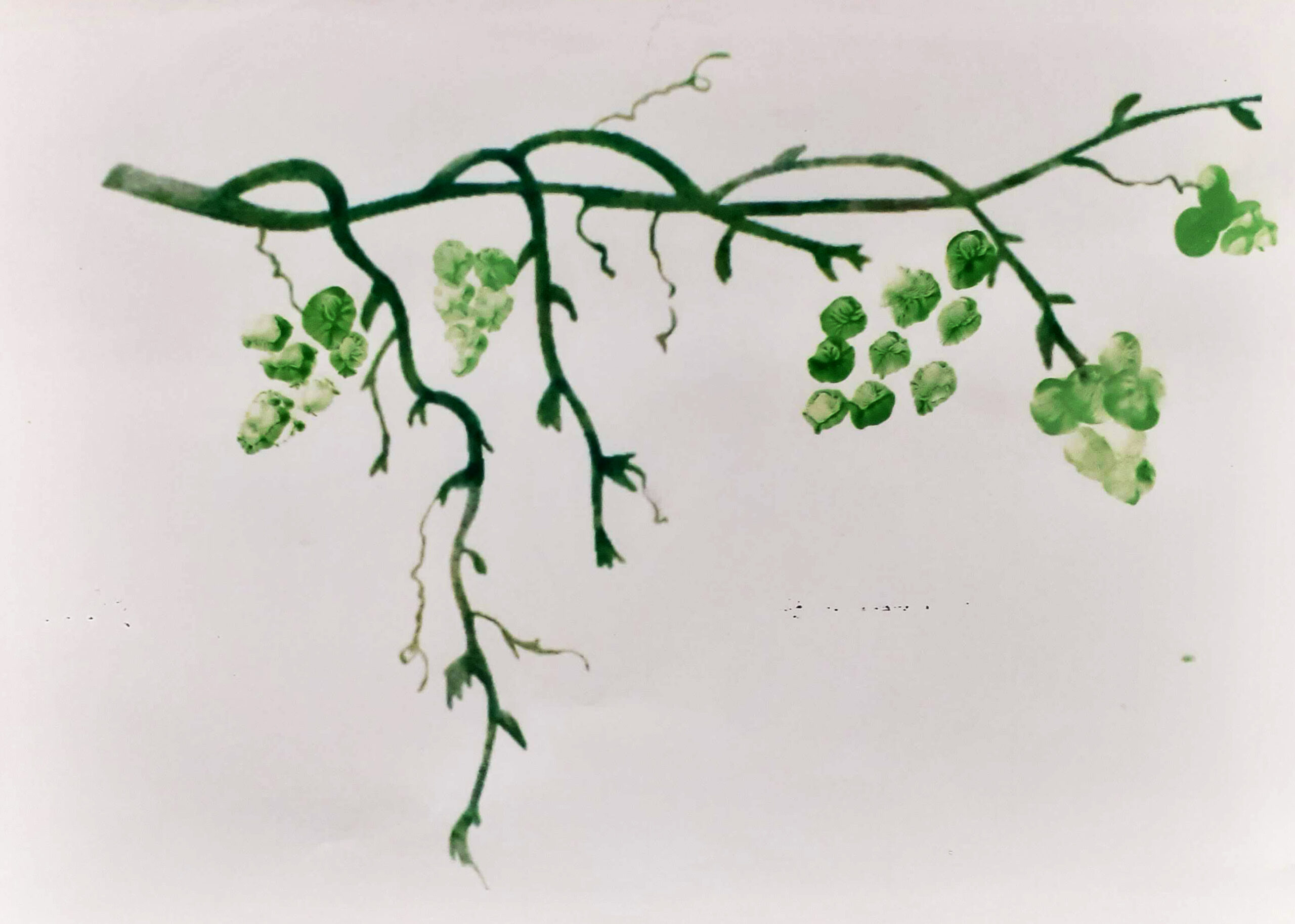 One VineInspired by the biblical passage of the unity between the vine and the branches ( Jn 15: 5-19) this prayer space inspires one to appreciate and pray for unity specifically amongst Christians of different denominations. |
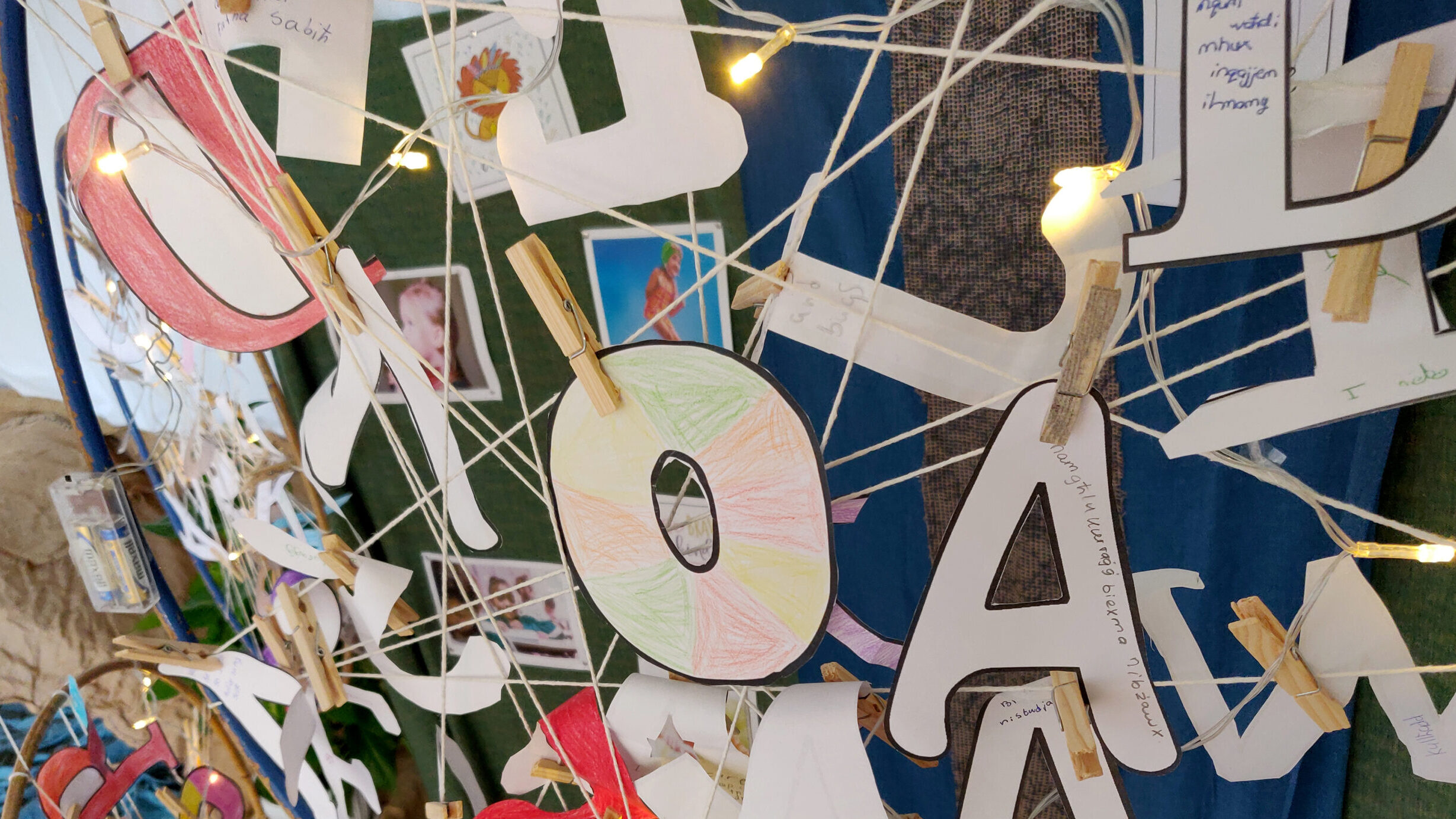 Being BraveThis space is to help one think of the situation where bravery is needed and to ask God for courage. |
St Paul is rarely represented next to a viper or a bonfire. These two images are mainly used within a Maltese context and in paintings that refer to the Shipwreck narrative as found in the Acts of the Apostles. The two images may remind the viewers of the merciful hospitality shown by the Maltese and the healing brought by Paul. They have come to signify how welcome and mercy lead to healing and new life.
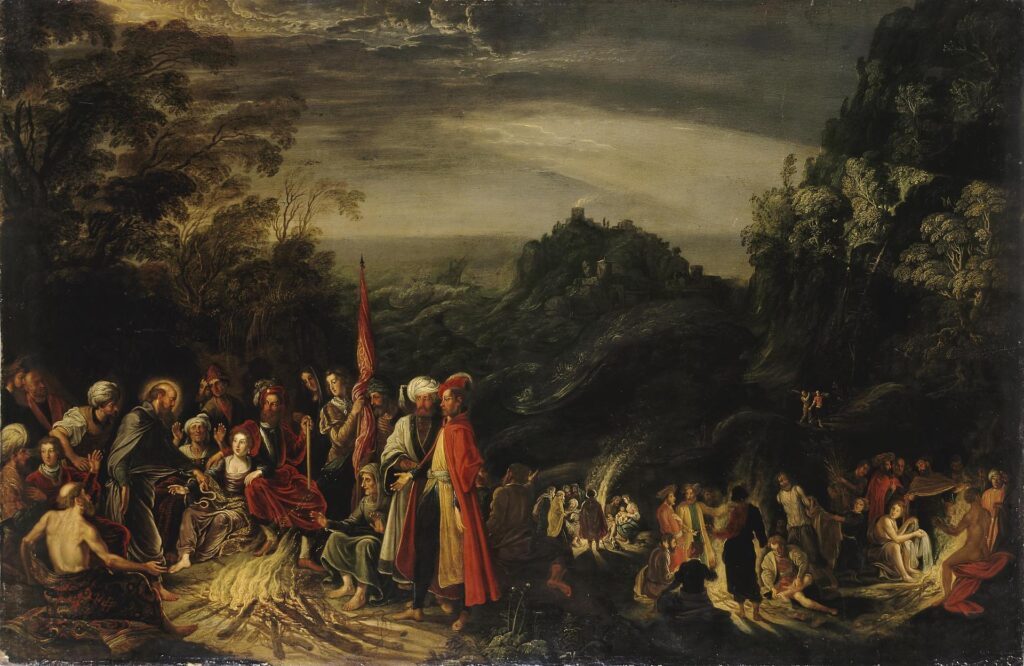
Painting: Detail of Miracle of St Paul on the Island of Malta by David Teniers
Source : https://www.facebook.com/SymbolLiteracyProject
The chapel known as tal-Ħġejjeġ in St Paul’s Bay is the third one to be built. The one before this had been destroyed during the war, while the original chapel (probably built in the fifteenth century) stood where nowadays we find Wignacourt’s Tower. According to tradition, this was where the Maltese lit a fire for the shipwrecked and commemorated the miracle of St. Paul’s deliverance from the viper’s poison.
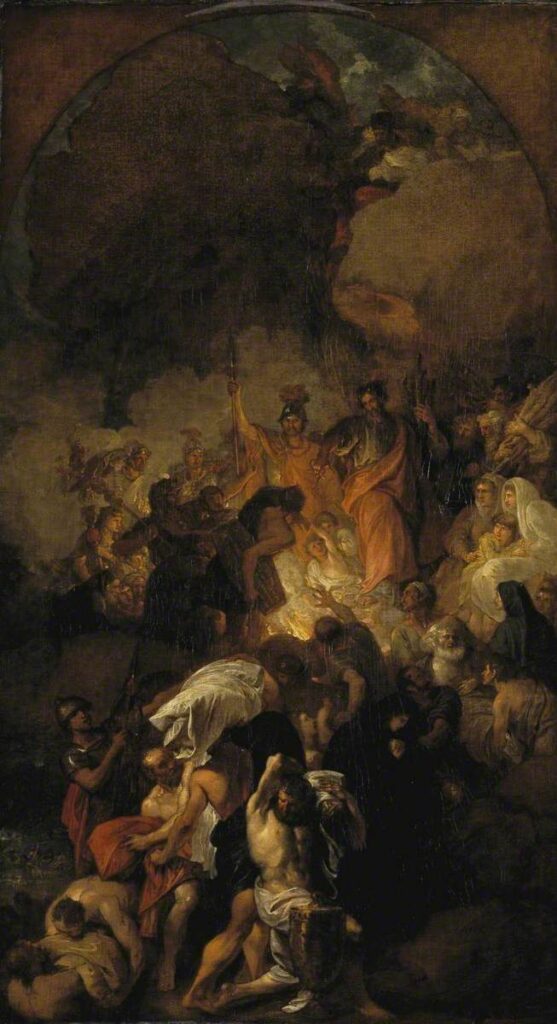
Source: https://www.facebook.com/SymbolLiteracyProject
According to tradition, after reaching the coast at Pwales, Paul beat three times on the rock to get fresh water. This tradition maintains that St Paul quenched the thirst of those with him on the galley with that water. Another tradition holds that St Paul used the water to baptize those with him. This story reminds us of the incident in the book of Exodus when Moses extracted water from a rock to quench the thirst of the Hebrew people. (Ex, 1-7). Until 1930, the faithful used to drink water from this fountain, but this practice had to stop because of contamination.
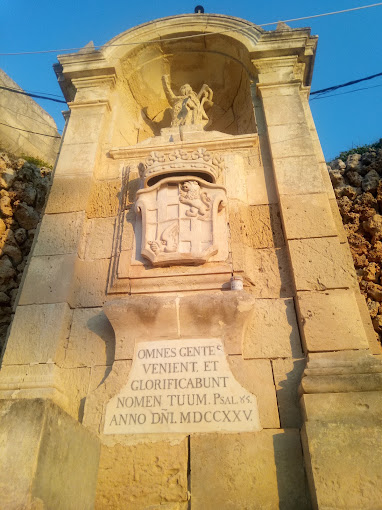
Għajn Rażul Fountain, St Paul’s Bay
Source: https://www.facebook.com/SymbolLiteracyProject
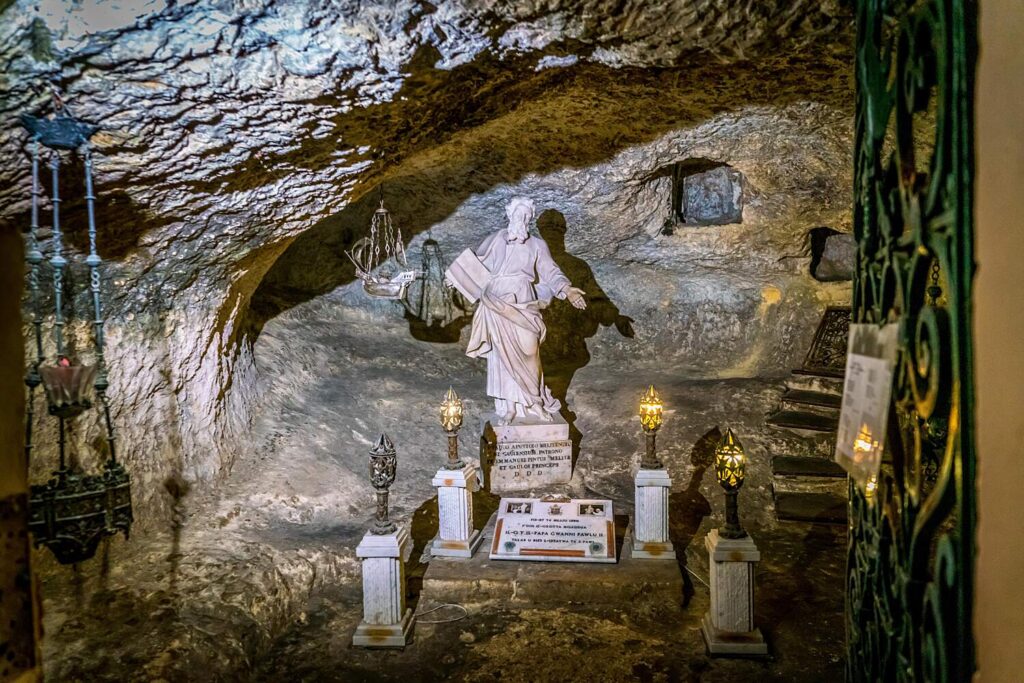
Nestled beneath the Church of St Paul in Rabat, Malta lies one of the island’s most revered spiritual sites: the Grotto of St Paul. This sacred cave is steeped in history and legend and is believed to be where St Paul sought refuge after his shipwreck on the Maltese shores in AD 60. The Apostle was famously shipwrecked en route to Rome as a prisoner, a pivotal moment recounted in the Acts of the Apostles.
During his three-month stay in Malta, St. Paul is credited with introducing Christianity to the island’s inhabitants, performing miracles, and healing the sick, including Publius, the Roman governor’s father. The Grotto is a testament to his enduring legacy as a focal point for pilgrimage and devotion.
The Grotto is a serene underground chamber, its walls adorned with tributes and relics honouring St Paul. Above the grotto, the Baroque Church of St. Paul was built in the 17th century, further solidifying the site’s religious significance.
Today, the Grotto of St Paul remains a cherished symbol of Malta’s Christian heritage. Visitors worldwide are drawn to its tranquil atmosphere, connecting with the spiritual roots of an island shaped by its faith and history.
Share
Discover more resources
